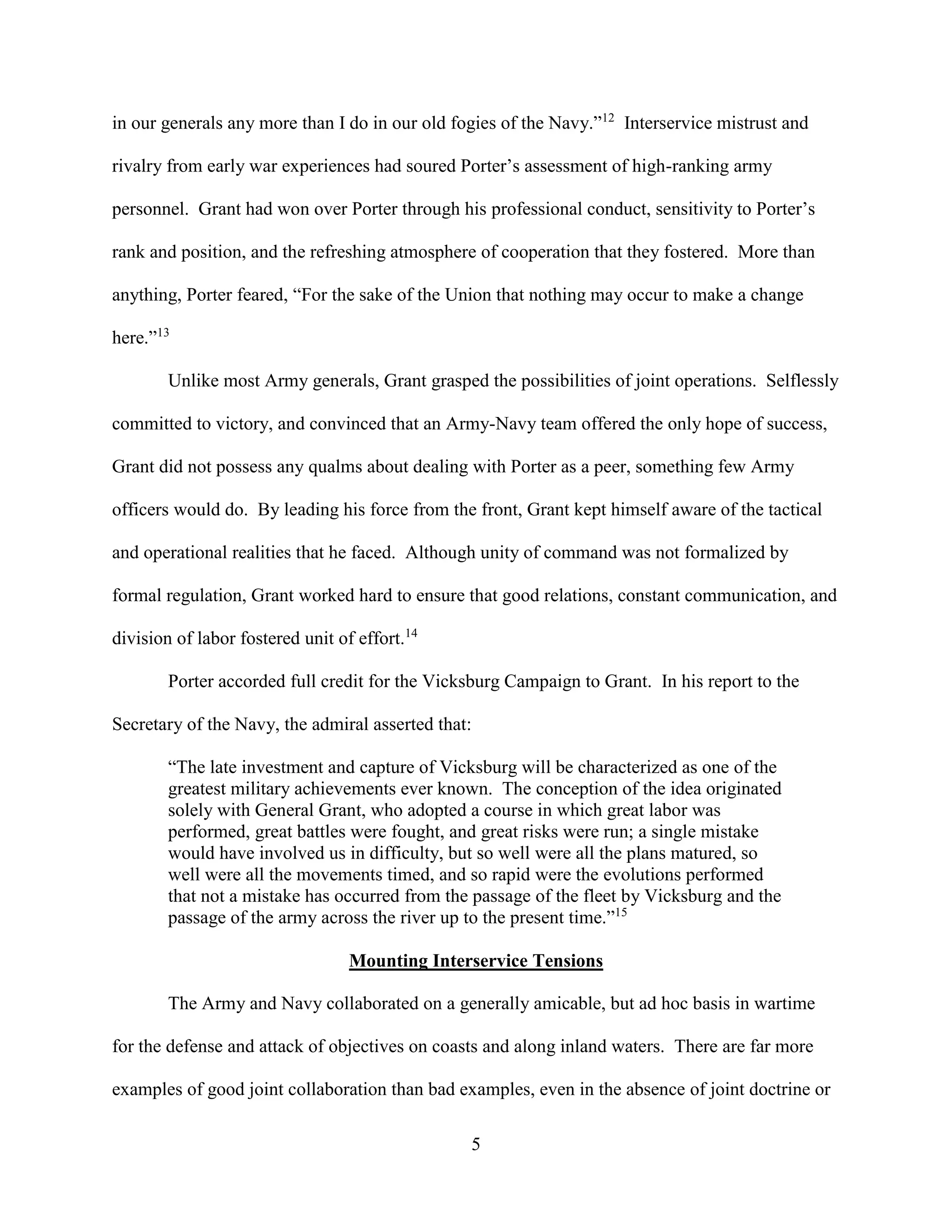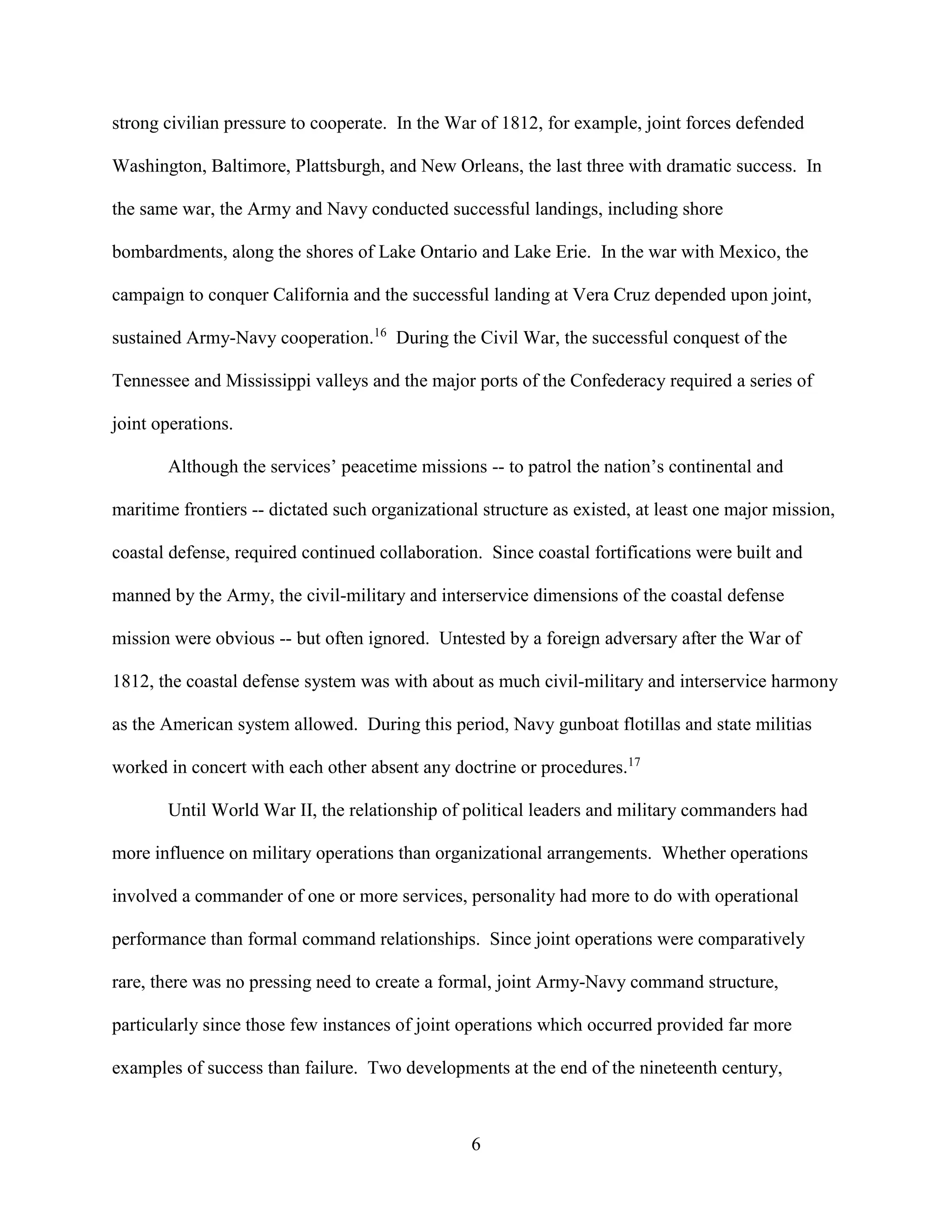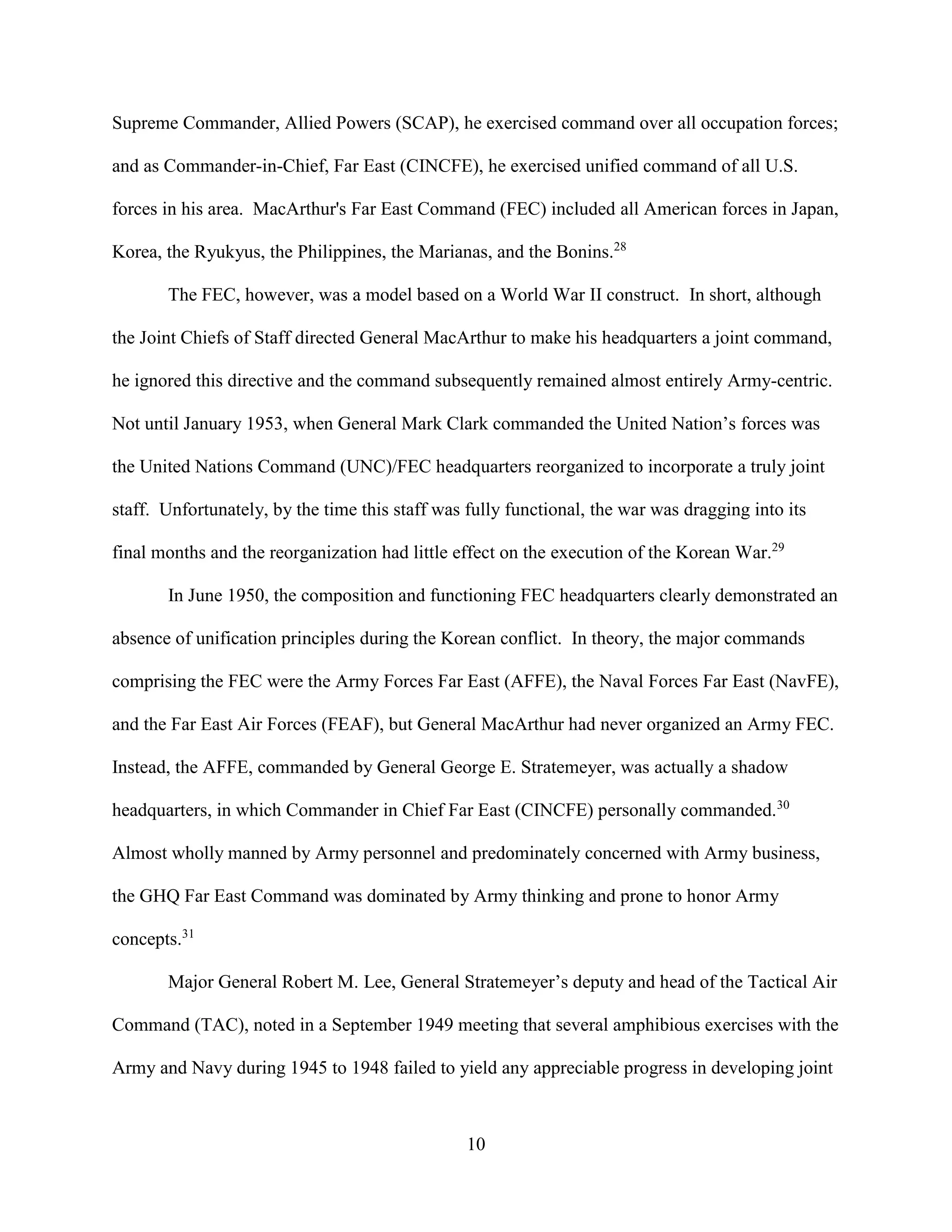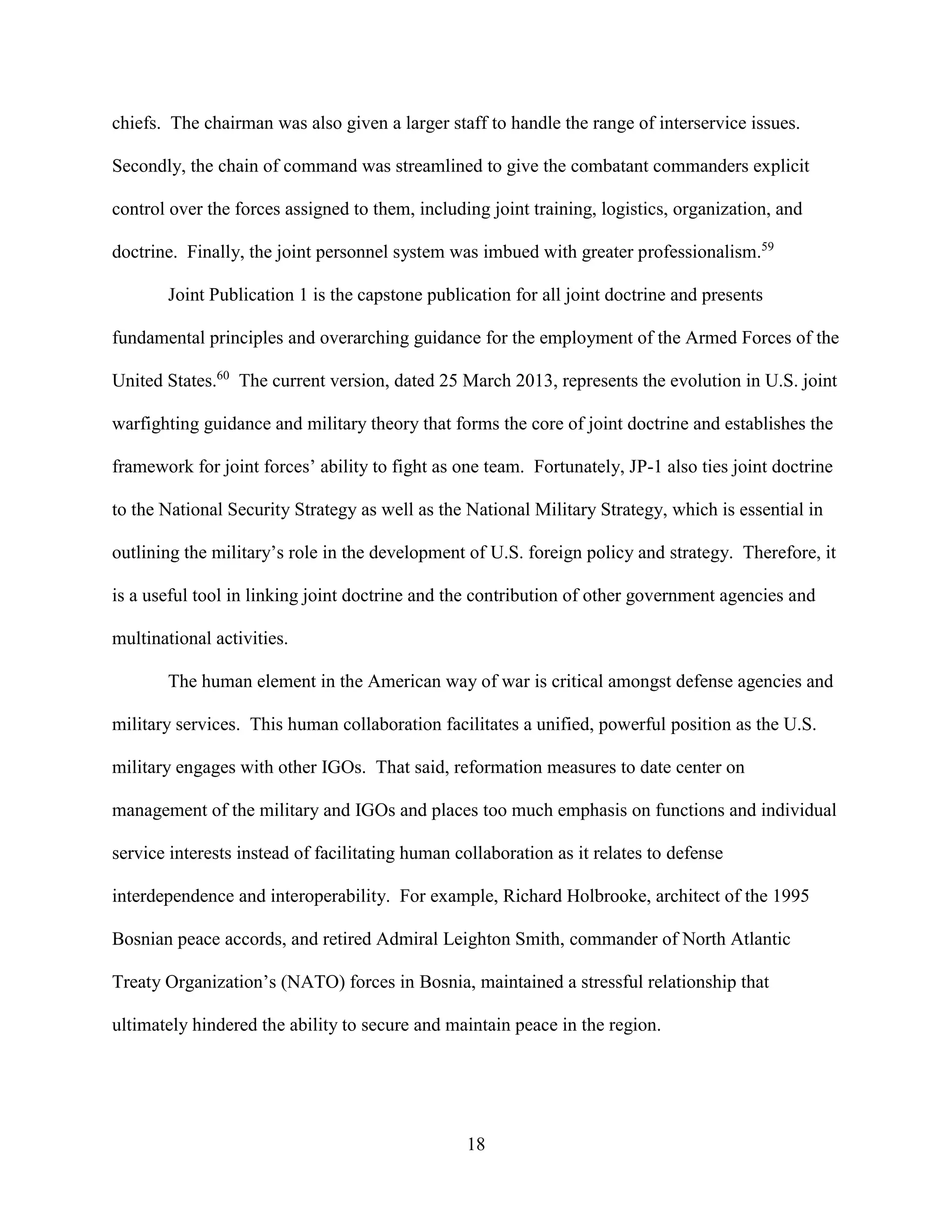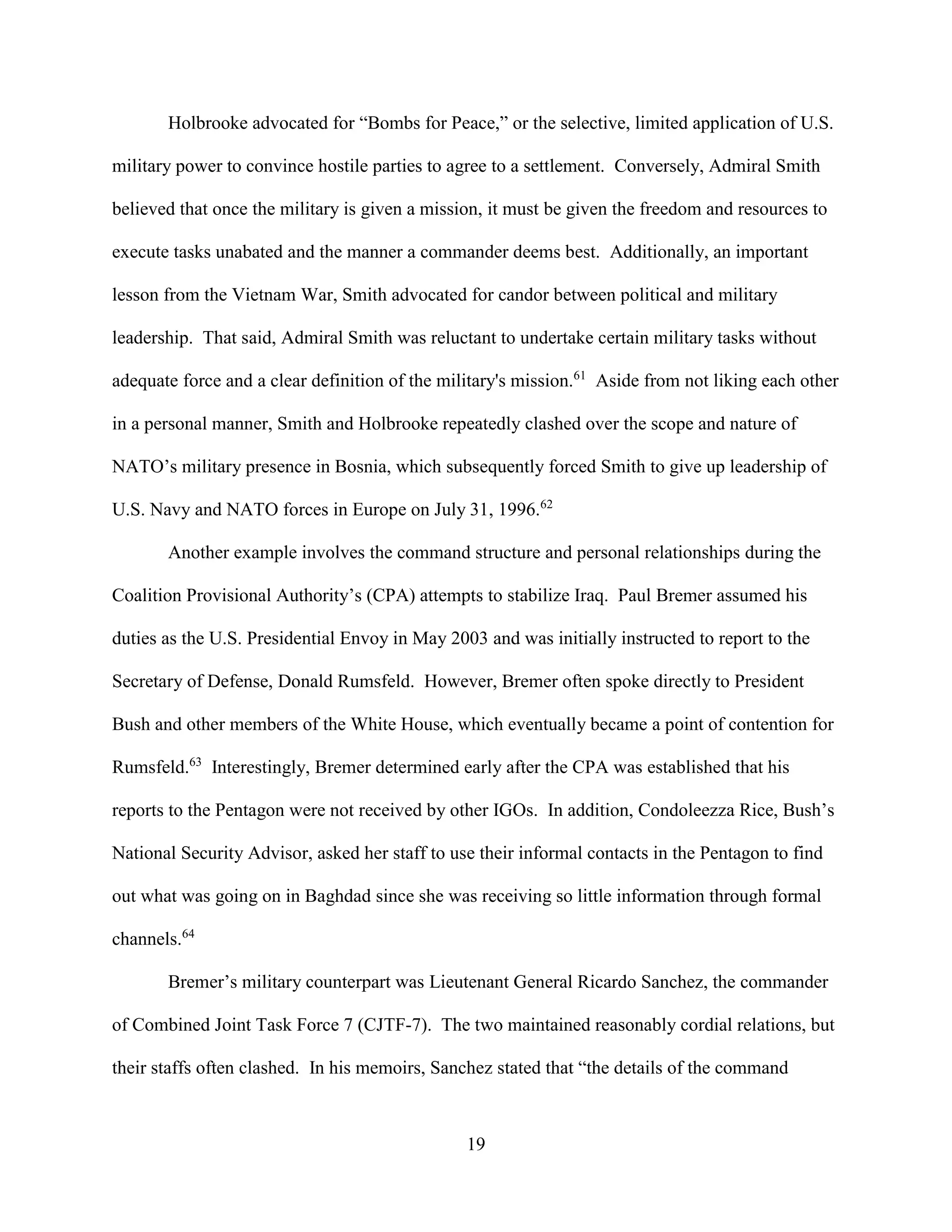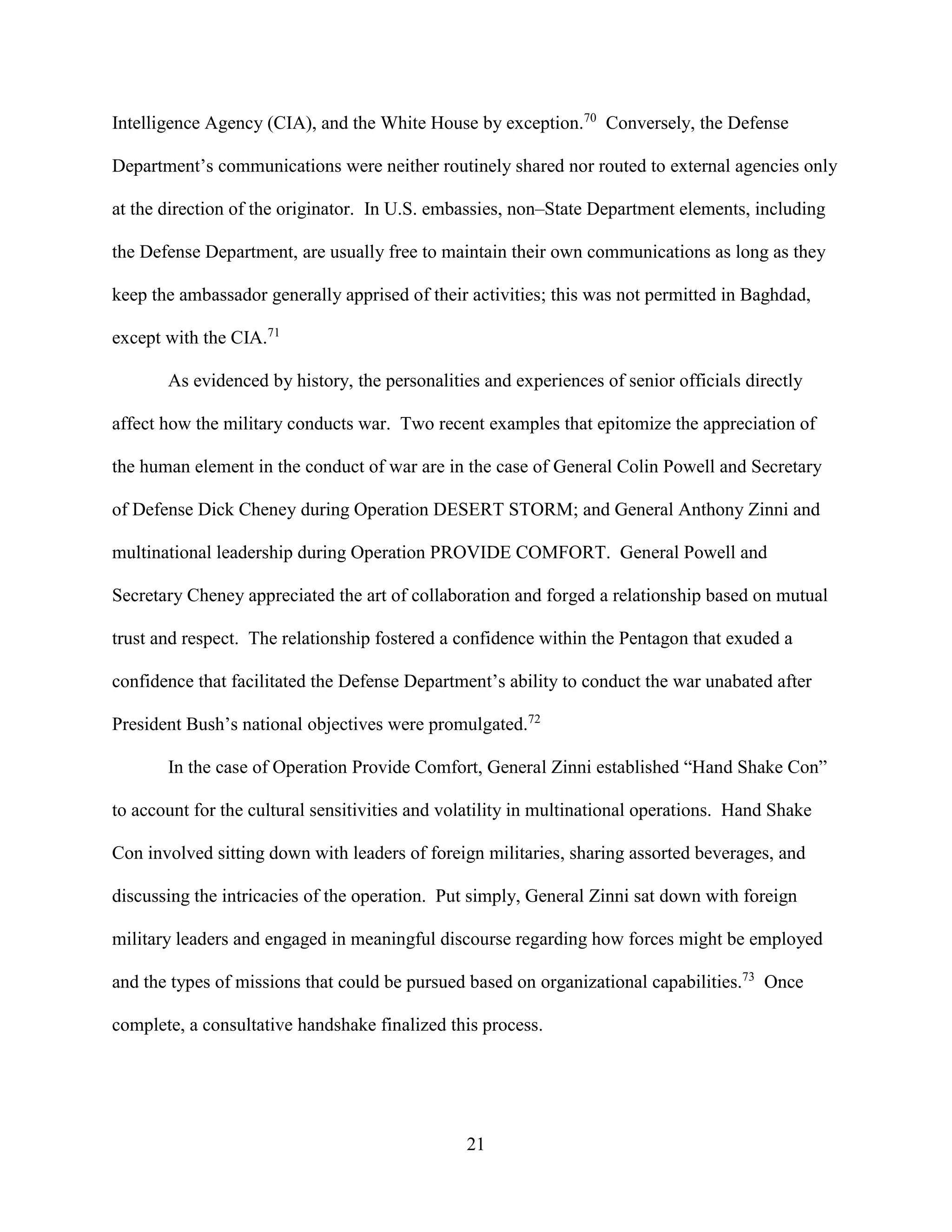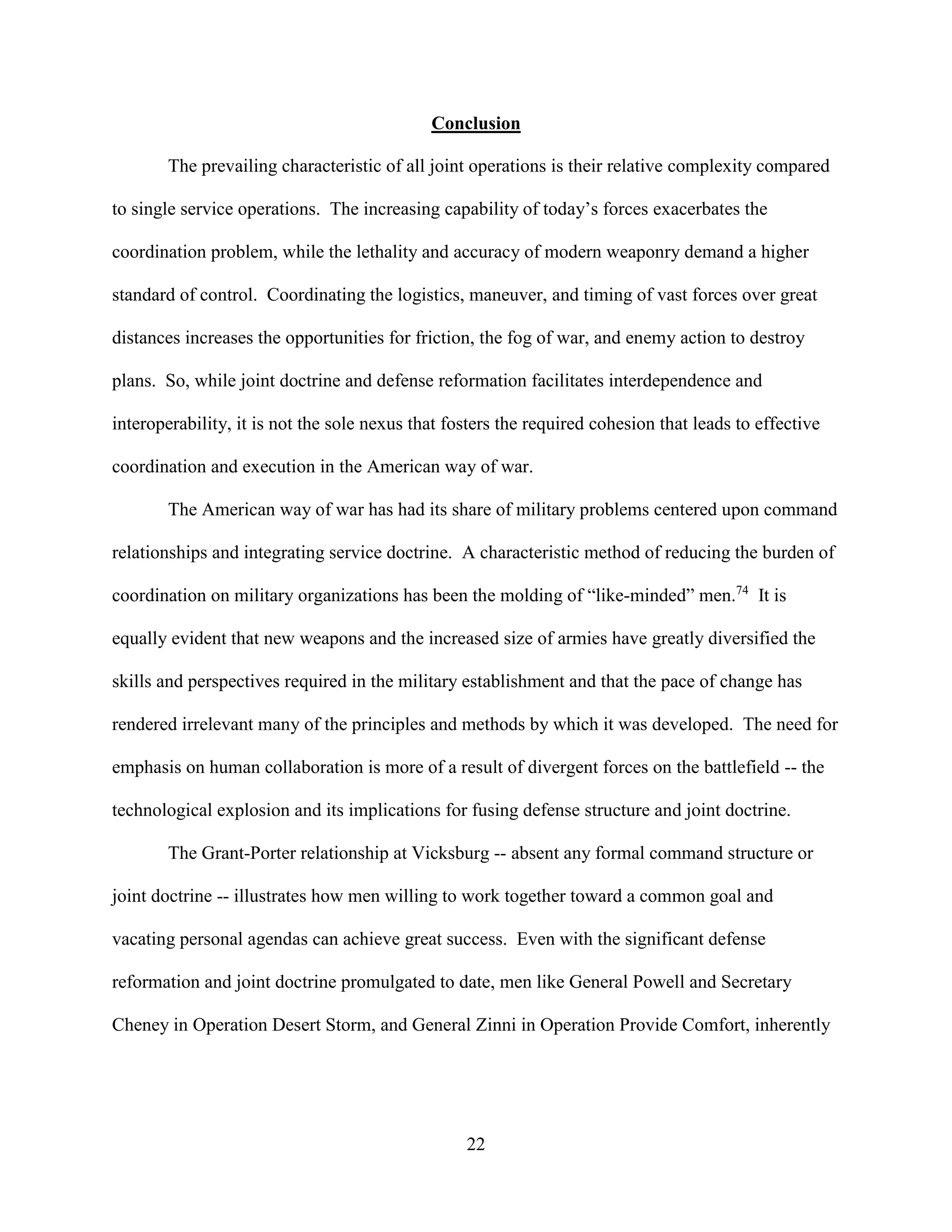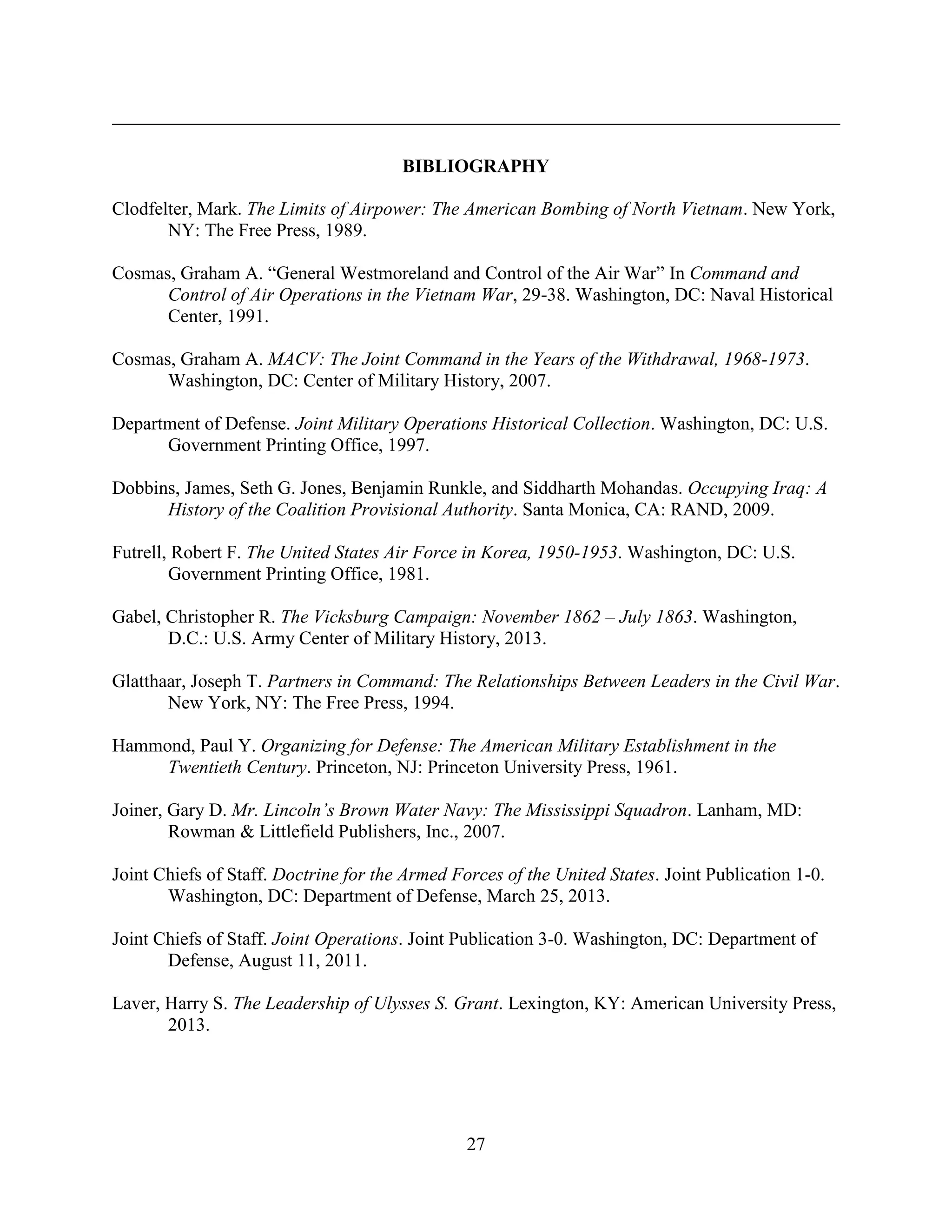This document is a thesis submitted by Major Christopher Siekman to the Marine Corps University in partial fulfillment of the requirements for a Master of Military Studies degree. The thesis argues that the American way of war as envisioned by the Pentagon is overly hierarchical and technical and overlooks the value of personality and collaboration. It examines historical examples of effective collaboration between the Army and Navy, such as during the Vicksburg Campaign led by General Grant and Admiral Porter. While defense reform has improved coordination, more emphasis needs to be placed on developing relationships between people in the armed services in order to fully integrate capabilities and ensure future military success.











